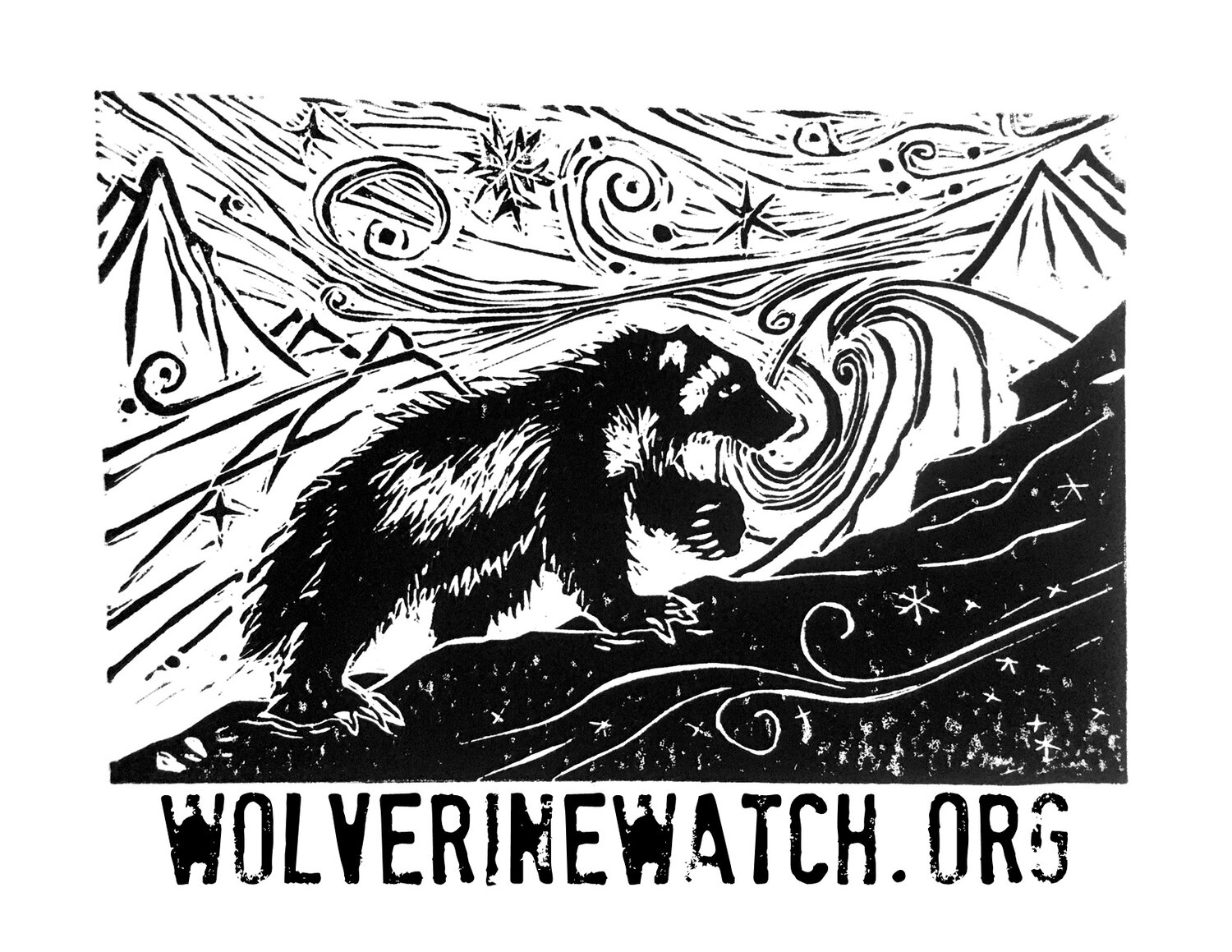EFFECTS OF HUMAN ACTIVITIES AND NATURAL PROCESSES ON WOLVERINE REPRODUCTION AND CONNECTIVITY
Objectives.
(1) To evaluate and compare effects of human activities on wolverine density, distribution, particularly that of breeding females, while accounting for variability in natural habitat characteristics;
(2) To estimate regional population structure, connectivity and source-sink mechanisms;
(3) To determine how infrastructure such as highways and hydro-reservoirs impact female dispersal and gene flow that can lead to fragmented populations;
(4) To communicate among interested parties and decision-makers.
Progress.
Research paper: Guidelines for Winter Recreation near Wolverine Dens in Montane Western North America.
Research paper: Protection status, human disturbance, snow cover and trapping drive density of a declining wolverine population in the Canadian Rocky Mountains.
Background.
Animals that require large intact natural areas, have low reproductive rates and low natural densities are particularly vulnerable to human impacts. Wolverines are exactly such animals, so it’s not surprising that they have been assessed as “Special Concern” by COSEWIC in 2014, and were listed under Canada’s Species At Risk Act in 2018.
Female wolverines have special habitat requirements to successfully rear their young. They avoid developed and “busy” (with people) areas, which results in fragmentation of populations. They are also strongly territorial, so any given area of wolverine habitat of the right size (100 - 500 km2 !) will only be occupied by at most one adult female, as they will not share. That means, that the number of females in a given area is directly related to the spatial extent of quality wolverine habitat. No female habitat, no baby wolverines. Without enough young born, however, any population will shrink and eventually disappear.
So: How do female wolverines do in southern BC? How much female habitat do we have left, and how many reproductive females are there? We don’t know much about where female wolverines still reproduce in our multi-use landscapes, and where they don’t. Do human activities interact with each other and with natural processes to affect the distribution and dispersal of wolverines and of reproductive females?
Working across 50,000 km2 in British Columbia and Alberta, we use photos and genetic data of wolverines collected between 2018 - 2022. The study area has a range of habitat conditions and human activities, including winter recreation, forestry, trapping, and roads. How these factors affect wolverine density will be compared using spatially explicit capture-recapture models, while regional gene flow patterns and population structuring will be assessed using landscape genetic methods.
This research is intended to result in greater understanding of interacting forms of human activity and their impact on rare species of conservation concern, and to inform future conservation strategies.
Who. Mirjam Barrueto, Marco Musiani, Aerin Jacob, Anne Forshner, Tony Clevenger, Jesse Whittington
Location. Upper Columbia, North Thompson, Central Canadian Rockies (BC & AB)
Duration. 2017 to 2023
Partners & Funding.
Our many formal and informal partners are our biggest strength! We could not do this research without the commitment and support of these organizations, agencies and companies:



